
Iconic Western Mediterranean
Iconic Western Mediterranean
Cruise overview
WHY BOOK WITH US?
- ✔ The Deluxe Cruises’ team has extensive experience in ultra-luxury cruising.
- ✔ Call now to speak to our helpful and experienced Cruise Concierge team.
- ✔ Enjoy our Unique Deluxe Cruises Bonus for substantial savings.
- ✔ Our team will tailor your holiday to your exacting requirements.
- ✔ As agents, we work under the protection of each cruise lines ABTA / ATOL licences
About Barcelona
The infinite variety of street life, the nooks and crannies of the medieval Barri Gòtic, the ceramic tile and stained glass of Art Nouveau facades, the art and music, the throb of street life, the food (ah, the food!)—one way or another, Barcelona will find a way to get your full attention. The capital of Catalonia is a banquet for the senses, with its beguiling mix of ancient and modern architecture, tempting cafés and markets, and sun-drenched Mediterranean beaches. A stroll along La Rambla and through waterfront Barceloneta, as well as a tour of Gaudí's majestic Sagrada Famíliaand his other unique creations, are part of a visit to Spain's second-largest city. Modern art museums and chic shops call for attention, too. Barcelona's vibe stays lively well into the night, when you can linger over regional wine and cuisine at buzzing tapas bars.
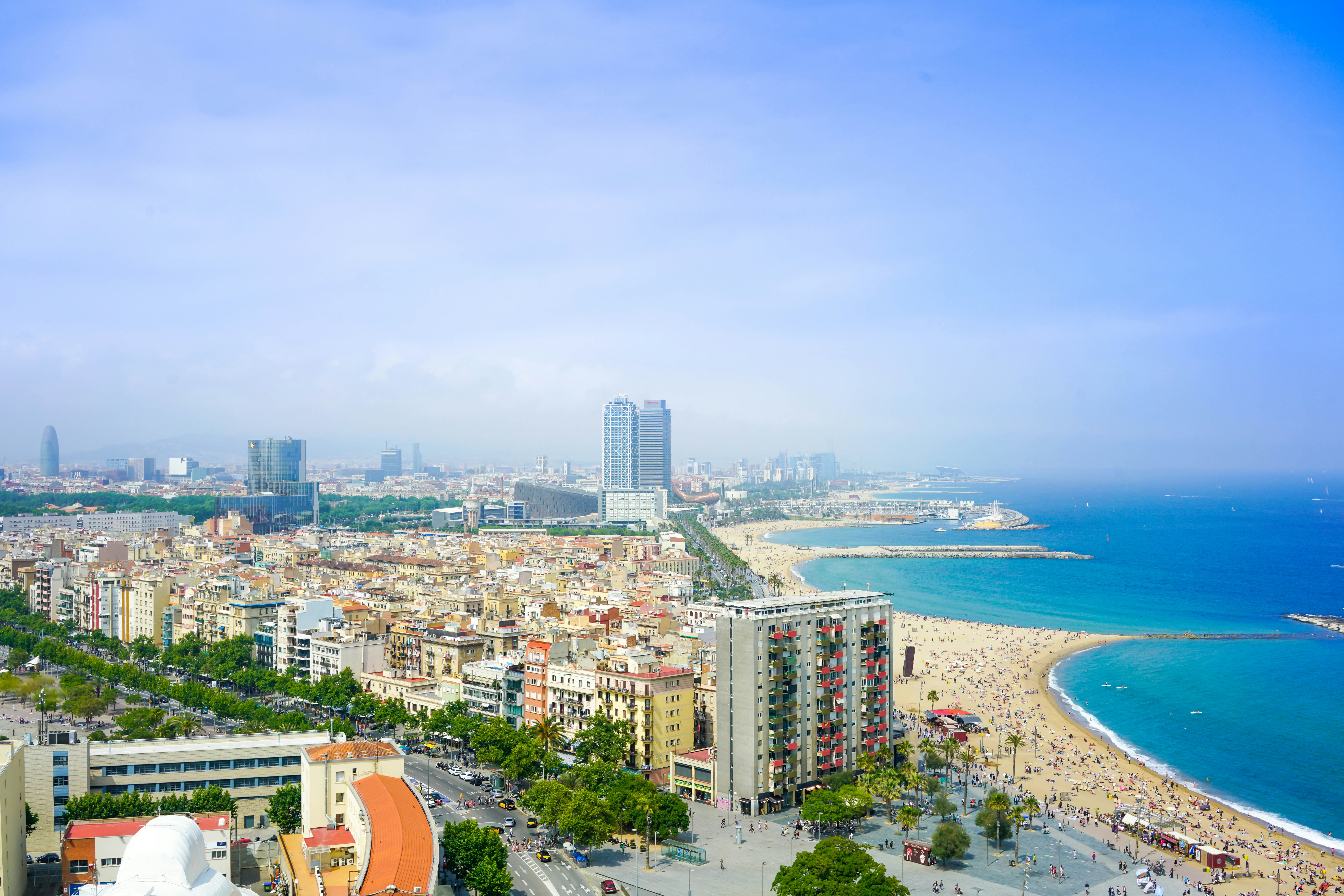
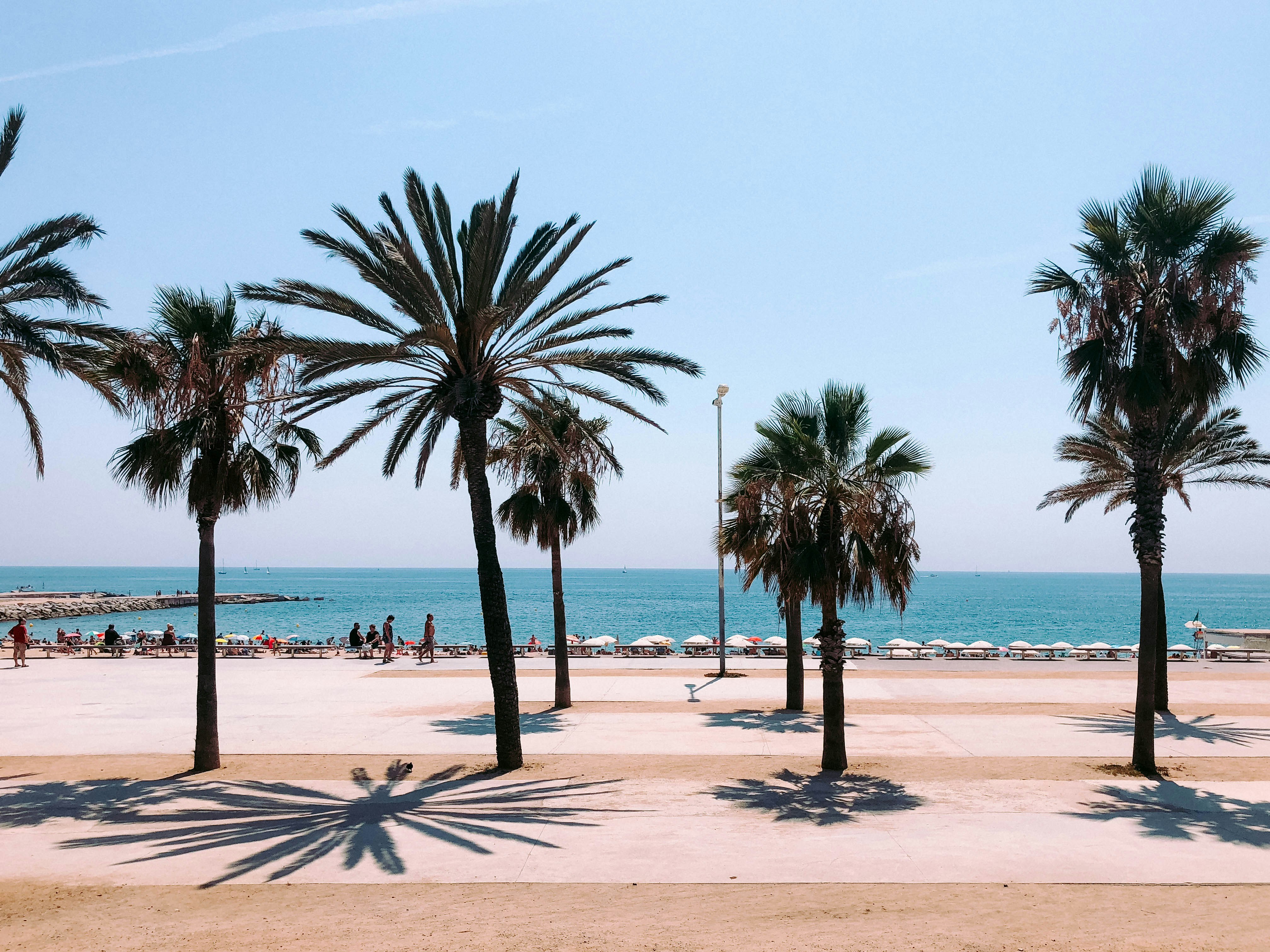
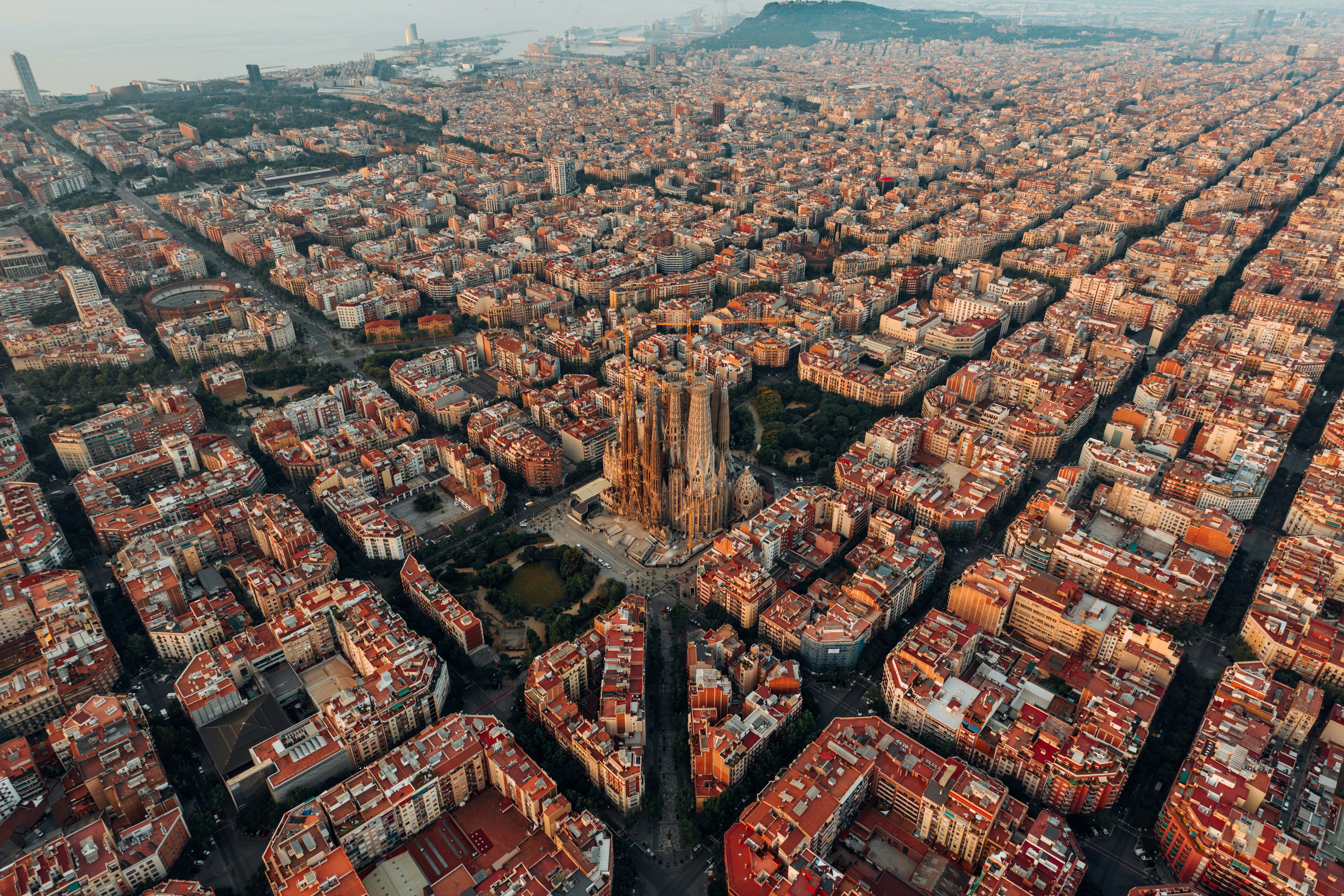

About Barcelona
The infinite variety of street life, the nooks and crannies of the medieval Barri Gòtic, the ceramic tile and stained glass of Art Nouveau facades, the art and music, the throb of street life, the food (ah, the food!)—one way or another, Barcelona will find a way to get your full attention. The capital of Catalonia is a banquet for the senses, with its beguiling mix of ancient and modern architecture, tempting cafés and markets, and sun-drenched Mediterranean beaches. A stroll along La Rambla and through waterfront Barceloneta, as well as a tour of Gaudí's majestic Sagrada Famíliaand his other unique creations, are part of a visit to Spain's second-largest city. Modern art museums and chic shops call for attention, too. Barcelona's vibe stays lively well into the night, when you can linger over regional wine and cuisine at buzzing tapas bars.




About Sète
The fishing village of Sète serves as gateway to Montpellier, in the North. Other noteworthy destinations in this area include Carcassone, Aigues Mortes, the Abbaye de Fontfroide, and Pezenas. For a look at the real fisherman's life, however, stay right where you are. Sète is the Mediterranean's biggest fishing port. Canals winding through town make it fun to stroll around, and there are a number of good walking paths leading to the beach (about 30 minutes to the west). Although it's small and unspectacular, Plage de la Corniche has calm, pristine waters that are perfect for swimming. For a panoramic view of the area, climb Mont St-Clair or Les Pierres Blanches and pick a beach to settle down on.




About Marseille
Since being designated a European Capital of Culture for 2013, with an estimated €660 million of funding in the bargain, Marseille has been in the throes of an extraordinary transformation, with no fewer than five major new arts centers, a beautifully refurbished port, revitalized neighborhoods, and a slew of new shops and restaurants. Once the underdog, this time-burnished city is now welcoming an influx of weekend tourists who have colonized entire neighborhoods and transformed them into elegant pieds-à-terre (or should we say, mer). The second-largest city in France, Marseille is one of Europe's most vibrant destinations. Feisty and fond of broad gestures, it is also as complicated and as cosmopolitan now as it was when a band of Phoenician Greeks first sailed into the harbor that is today's Vieux Port in 600 BC. Legend has it that on that same day a local chieftain's daughter, Gyptis, needed to choose a husband, and her wandering eyes settled on the Greeks' handsome commander Protis. Her dowry brought land near the mouth of the Rhône, where the Greeks founded Massalia, the most important Continental shipping port in antiquity. The port flourished for some 500 years as a typical Greek city, enjoying the full flush of classical culture, its gods, its democratic political system, its sports and theater, and its naval prowess. Caesar changed all that, besieging the city in 49 BC and seizing most of its colonies. In 1214 Marseille was seized again, this time by Charles d'Anjou, and was later annexed to France by Henri IV in 1481, but it was not until Louis XIV took the throne that the biggest transformations of the port began; he pulled down the city walls in 1666 and expanded the port to the Rive Neuve (New Riverbank). The city was devastated by plague in 1720, losing more than half its population. By the time of the Revolution, Marseille was on the rebound once again, with industries of soap manufacturing and oil processing flourishing, encouraging a wave of immigration from Provence and Italy. With the opening of the Suez Canal in 1869, Marseille became the greatest boomtown in 19th-century Europe. With a large influx of immigrants from areas as exotic as Tangiers, the city quickly acquired the multicultural population it maintains to this day.
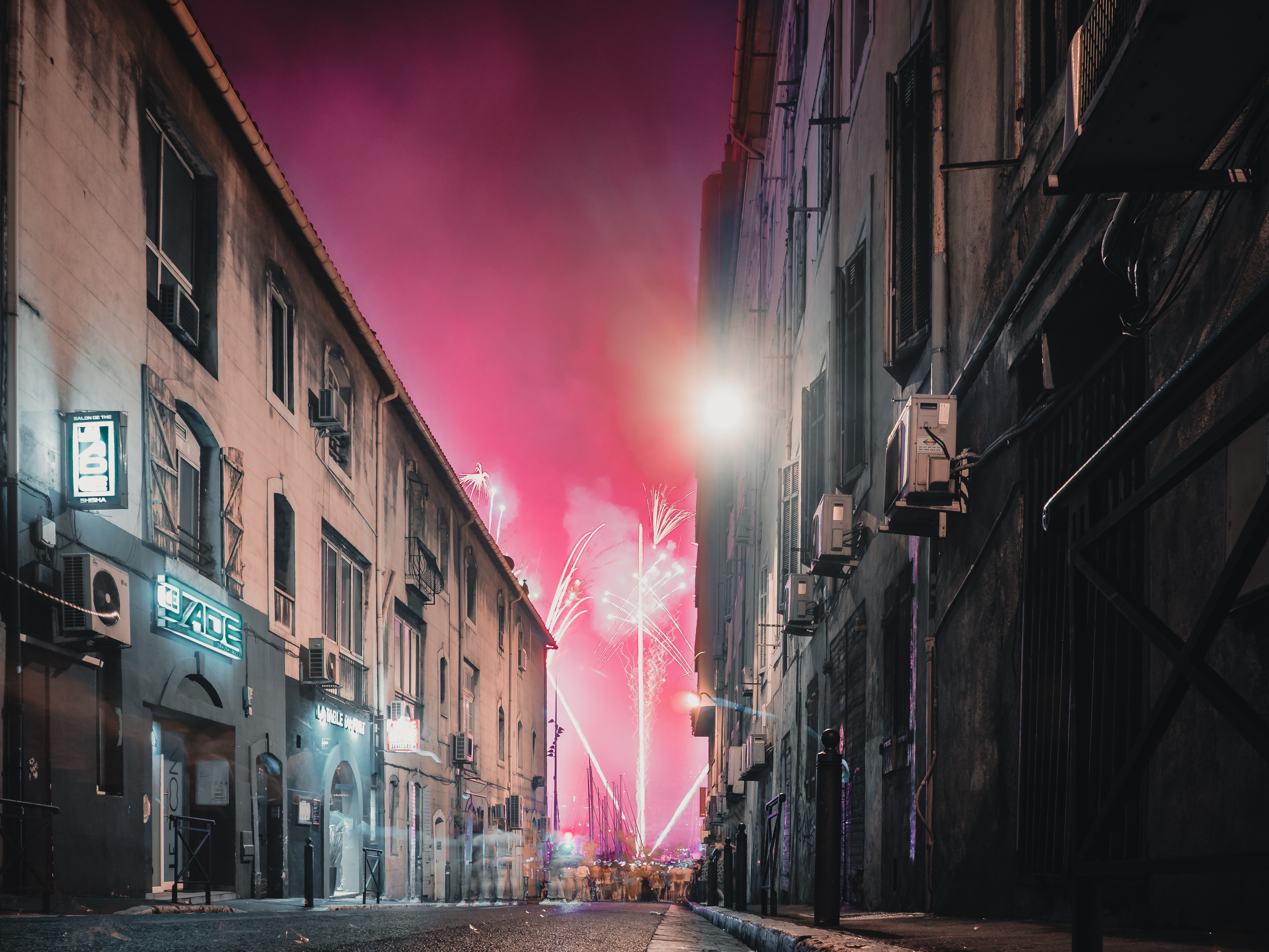




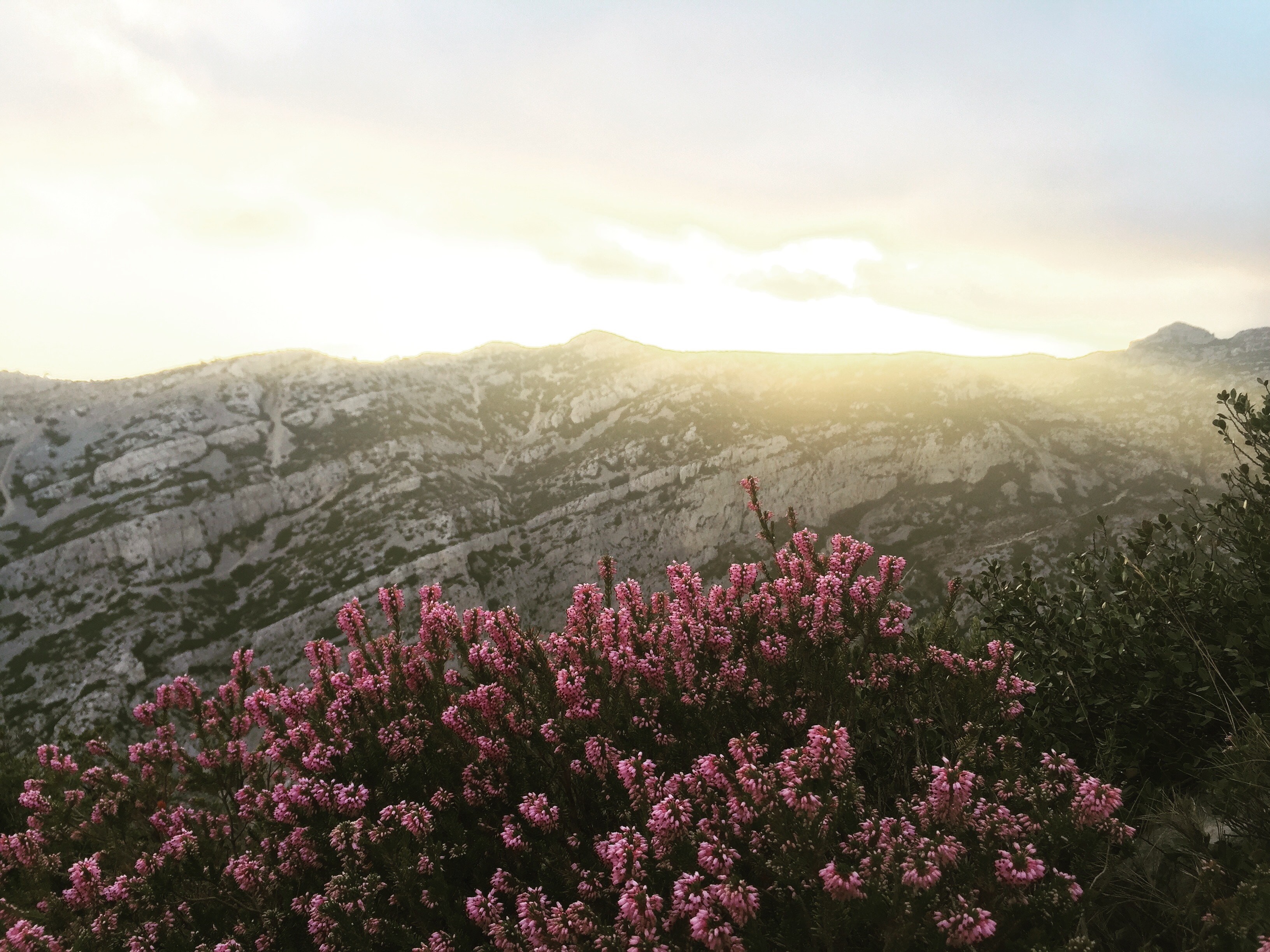
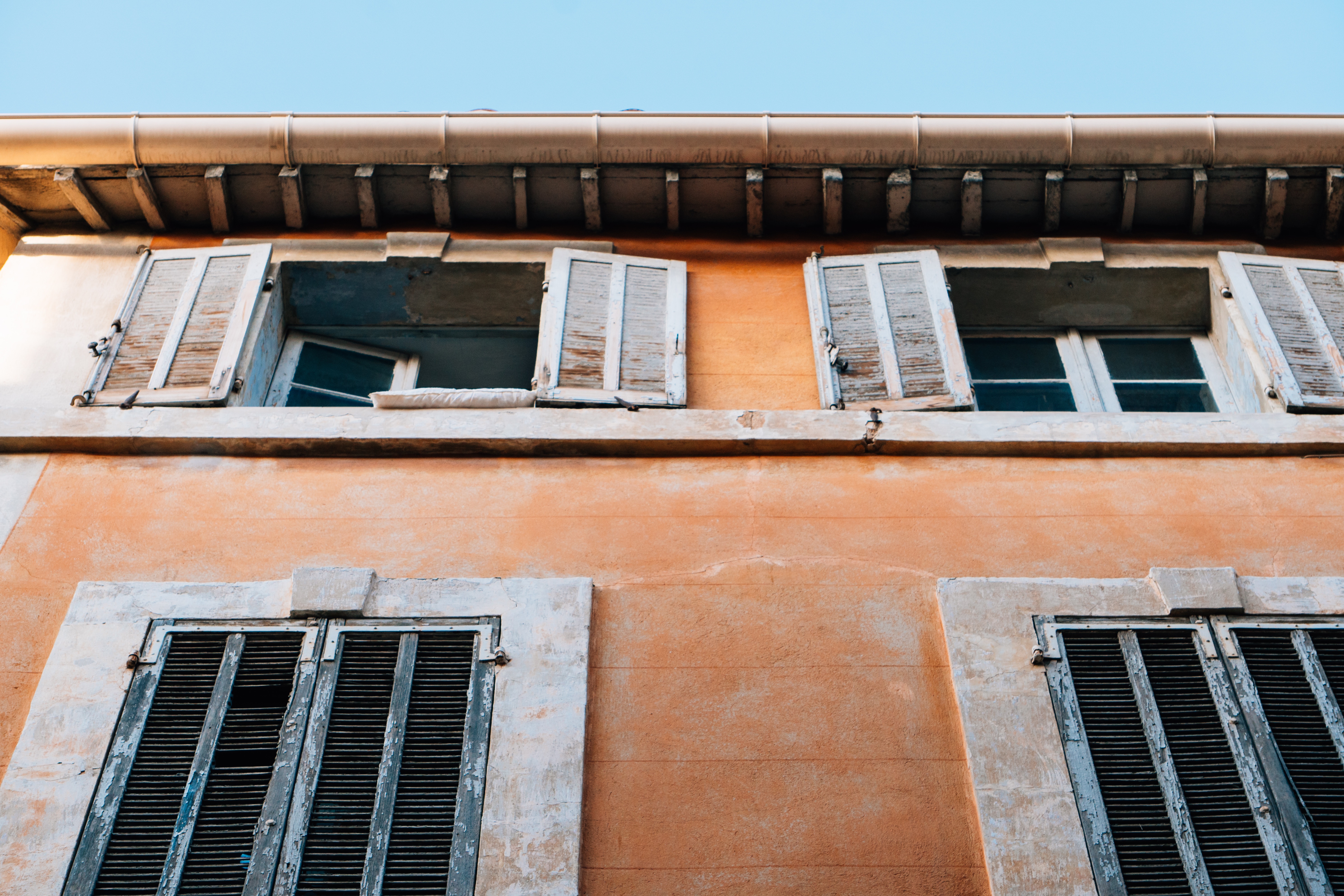


About Monte-Carlo
On one of the best stretches of the Mediterranean, this classic luxury destination is one of the most sought-after addresses in the world. With all the high-rise towers you have to look hard to find the Belle Époque grace of yesteryear. But if you head to the town's great 1864 landmark Hôtel de Paris—still a veritable crossroads of the buffed and befurred Euro-gentry—or enjoy a grand bouffe at its famous Louis XV restaurant, or attend the opera, or visit the ballrooms of the casino, you may still be able to conjure up Monaco's elegant past. Prince Albert II, a political science graduate from Amherst College, traces his ancestry to Otto Canella, who was born in 1070. The Grimaldi dynasty began with Otto's great-great-great-grandson, Francesco Grimaldi, also known as Frank the Rogue. Expelled from Genoa, Frank and his cronies disguised themselves as monks and in 1297 seized the fortified medieval town known today as Le Rocher (the Rock). Except for a short break under Napoléon, the Grimaldis have been here ever since, which makes them the oldest reigning family in Europe. In the 1850s a Grimaldi named Charles III made a decision that turned the Rock into a giant blue chip. Needing revenue but not wanting to impose additional taxes on his subjects, he contracted with a company to open a gambling facility. The first spin of the roulette wheel was on December 14, 1856. There was no easy way to reach Monaco then—no carriage roads or railroads—so no one came. Between March 15 and March 20, 1857, one person entered the casino—and won two francs. In 1868, however, the railroad reached Monaco, and it was filled with Englishmen who came to escape the London fog. The effects were immediate. Profits were so great that Charles eventually abolished all direct taxes. Almost overnight, a threadbare principality became an elegant watering hole for European society. Dukes (and their mistresses) and duchesses (and their gigolos) danced and dined their way through a world of spinning roulette wheels and bubbling champagne—preening themselves for nights at the opera, where such artists as Vaslav Nijinsky, Sarah Bernhardt, and Enrico Caruso came to perform. Along with the tax system, its sensational position on a broad, steep peninsula that bulges into the Mediterranean—its harbor sparkling with luxury cruisers, its posh mansions angling awnings toward the nearly perpetual sun—continues to draw the rich and famous. One of the latest French celebrities to declare himself "Monégasque," thus giving up his French passport, is superchef Alain Ducasse, who said that he made the choice out of affection for Monaco rather than tax reasons. Pleasure boats vie with luxury cruisers in their brash beauty and Titanic scale, and teams of handsome young men—themselves dyed blond and tanned to match—scour and polish every gleaming surface. As you might expect, all this glitz doesn't come cheap. Eating is expensive, and even the most modest hotels cost more here than in nearby Nice or Menton. As for taxis, they don't even have meters so you are completely at the driver's mercy (with prices skyrocketing during events such as the Grand Prix). For the frugal, Monaco is the ultimate day-trip, although parking is as coveted as a room with a view. At the very least you can afford a coffee at Starbucks. The harbor district, known as La Condamine, connects the new quarter, officially known as Monte Carlo with Monaco-Ville (or Le Rocher), a medieval town on the Rock, topped by the palace, the cathedral, and the Oceanography Museum. Have no fear that you'll need to climb countless steps to get to Monaco-Ville, as there are plenty of elevators and escalators climbing the steep cliffs. But shuttling between the lovely casino grounds of Monte Carlo and Old Monaco, separated by a vast port, is a daunting proposition for ordinary mortals without wings, so hop on the No. 1 bus from Saint Roman, or No. 2 from the Jardin Exotique - Both stop at Place du Casino and come up to Monaco Ville.
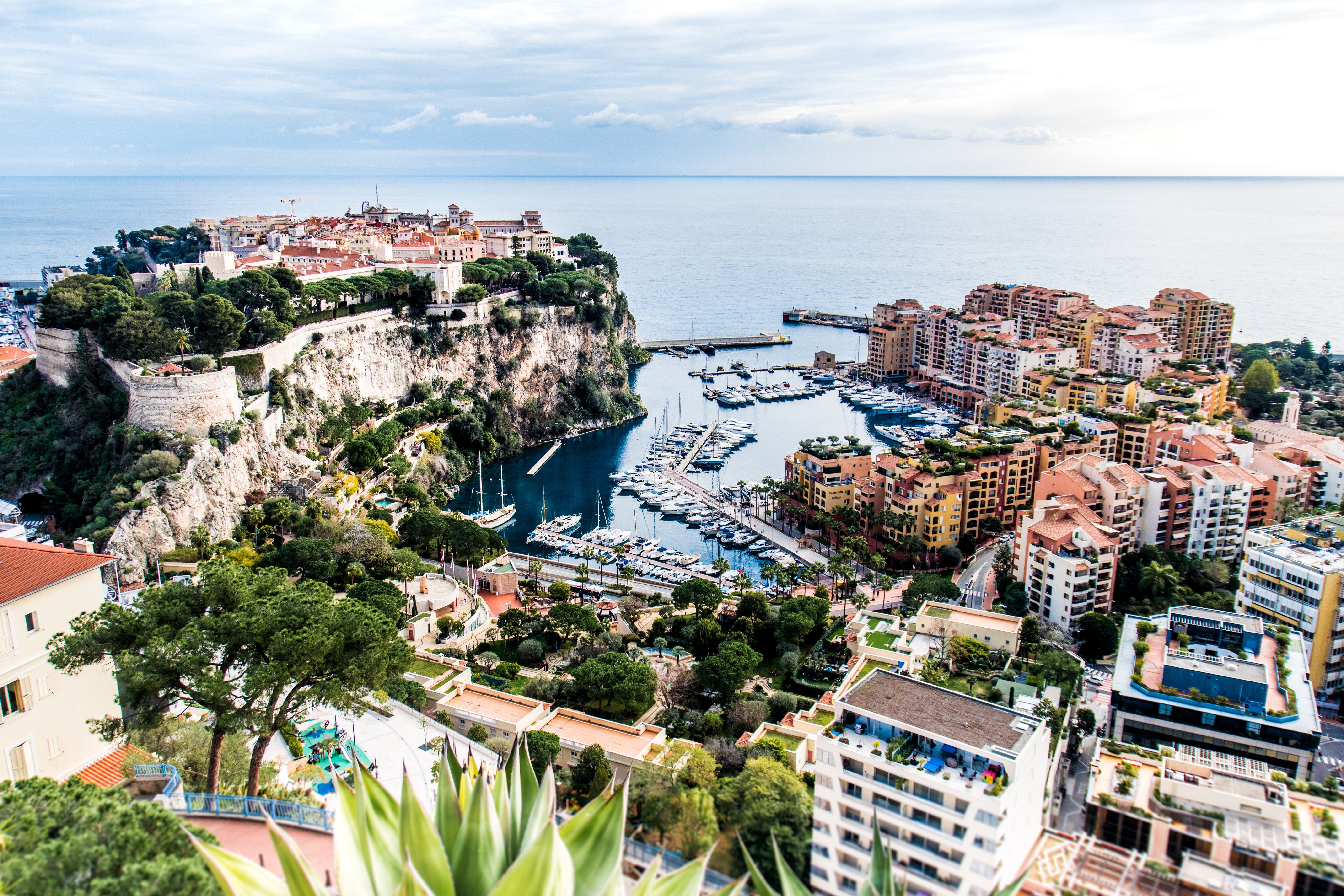
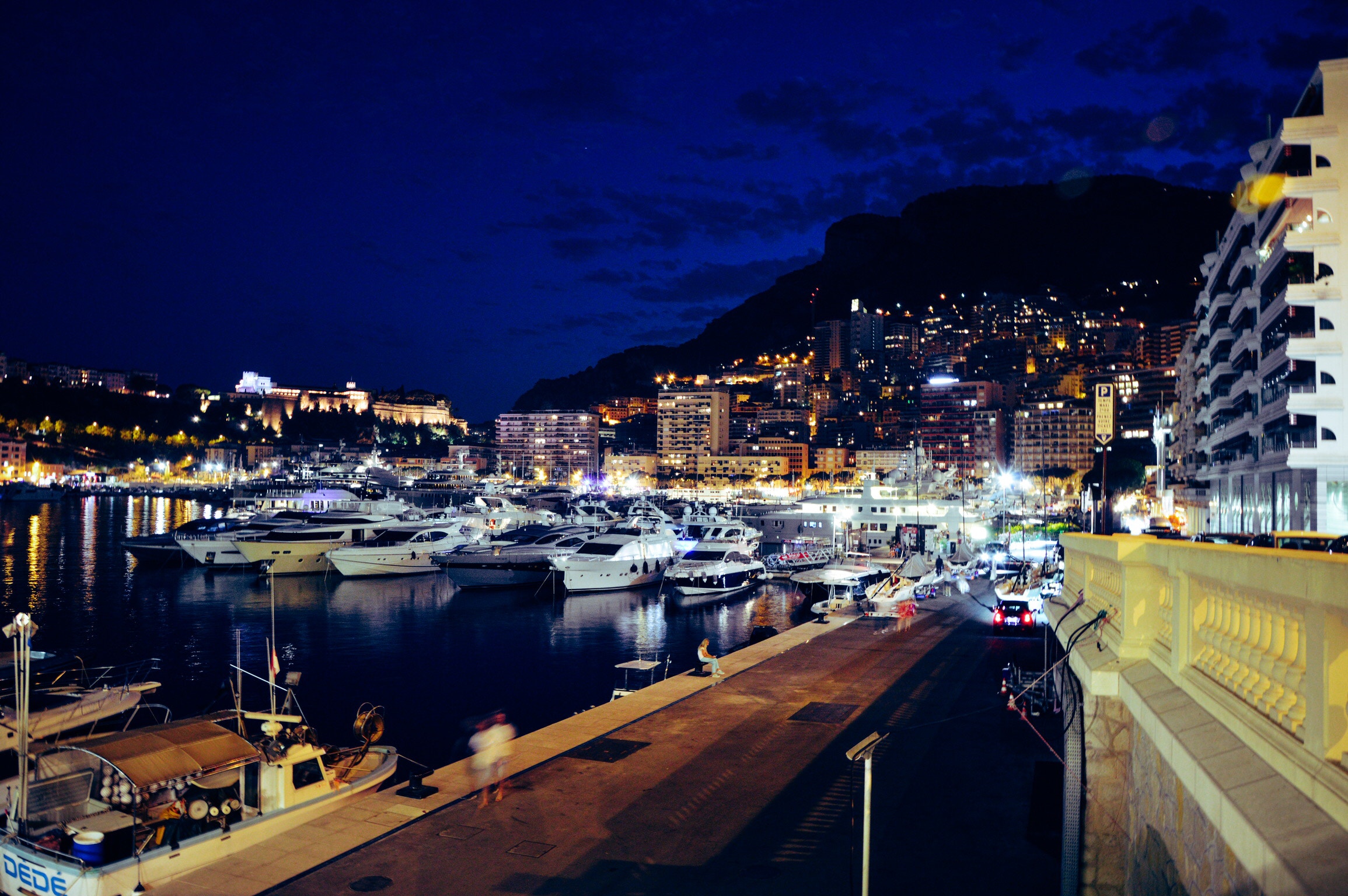
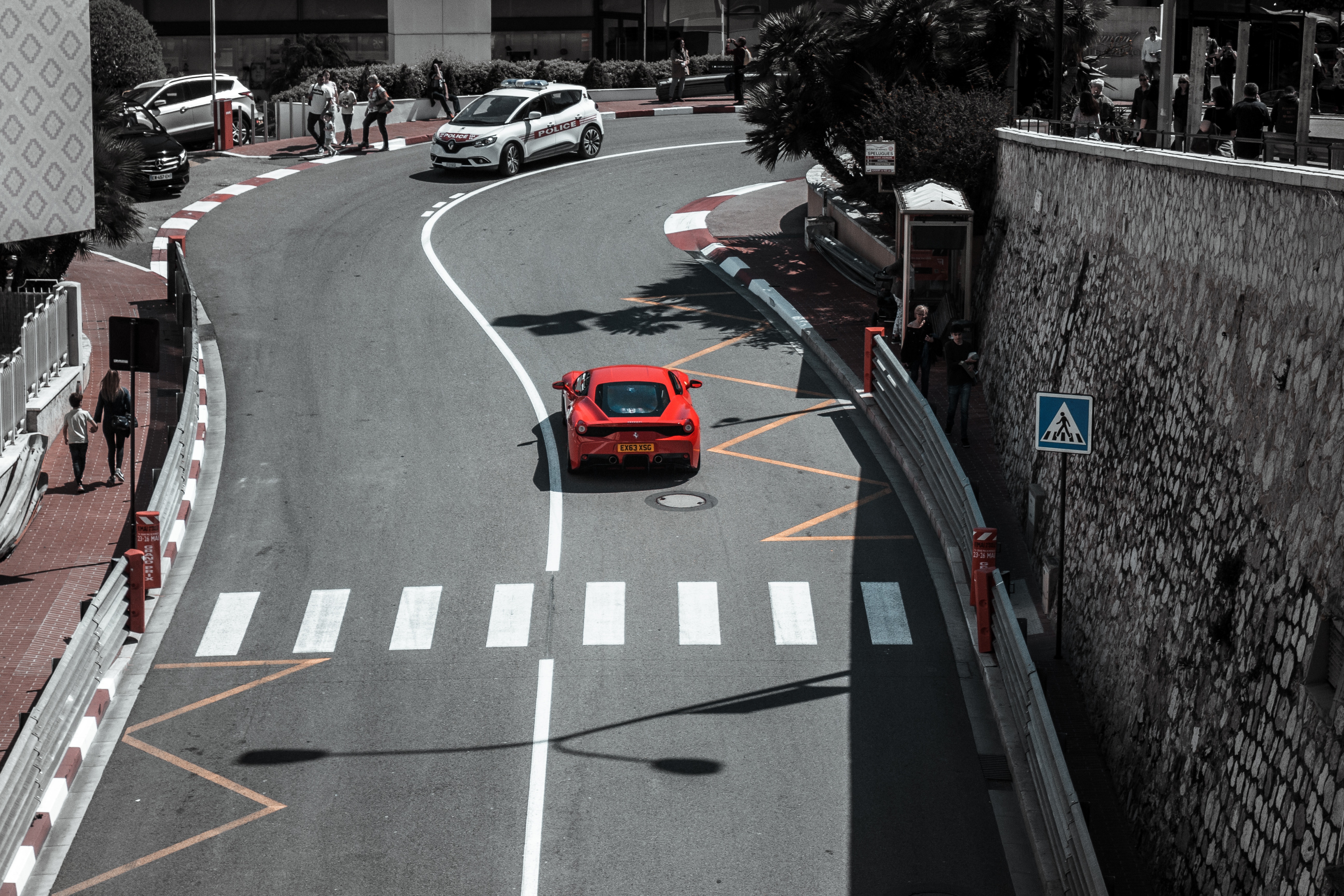
About Livorno
Livorno is a gritty city with a long and interesting history. In the early Middle Ages it alternately belonged to Pisa and Genoa. In 1421 Florence, seeking access to the sea, bought it. Cosimo I (1519–74) started construction of the harbor in 1571, putting Livorno on the map. After Ferdinando I de' Medici (1549–1609) proclaimed Livorno a free city, it became a haven for people suffering from religious persecution; Roman Catholics from England and Jews and Moors from Spain and Portugal, among others, settled here. The Quattro Mori (Four Moors), also known as the Monument to Ferdinando I, commemorates this. (The statue of Ferdinando I dates from 1595, the bronze Moors by Pietro Tacca from the 1620s.)In the following centuries, and particularly in the 18th, Livorno boomed as a port. In the 19th century the town drew a host of famous Britons passing through on their grand tours. Its prominence continued up to World War II, when it was heavily bombed. Much of the town's architecture, therefore, postdates the war, and it's somewhat difficult to imagine what it might have looked like before. Livorno has recovered from the war, however, as it's become a huge point of departure for container ships, as well as the only spot in Tuscany for cruise ships to dock for the day.Most of Livorno's artistic treasures date from the 17th century and aren't all that interesting unless you dote on obscure baroque artists. Livorno's most famous native artist, Amedeo Modigliani (1884–1920), was of much more recent vintage. Sadly, there's no notable work by him in his hometown.There may not be much in the way of art, but it's still worth strolling around the city. The Mercato Nuovo, which has been around since 1894, sells all sorts of fruits, vegetables, grains, meat, and fish. Outdoor markets nearby are also chock-full of local color. The presence of Camp Darby, an American military base just outside town, accounts for the availability of many American products.If you have time, Livorno is worth a stop for lunch or dinner at the very least.
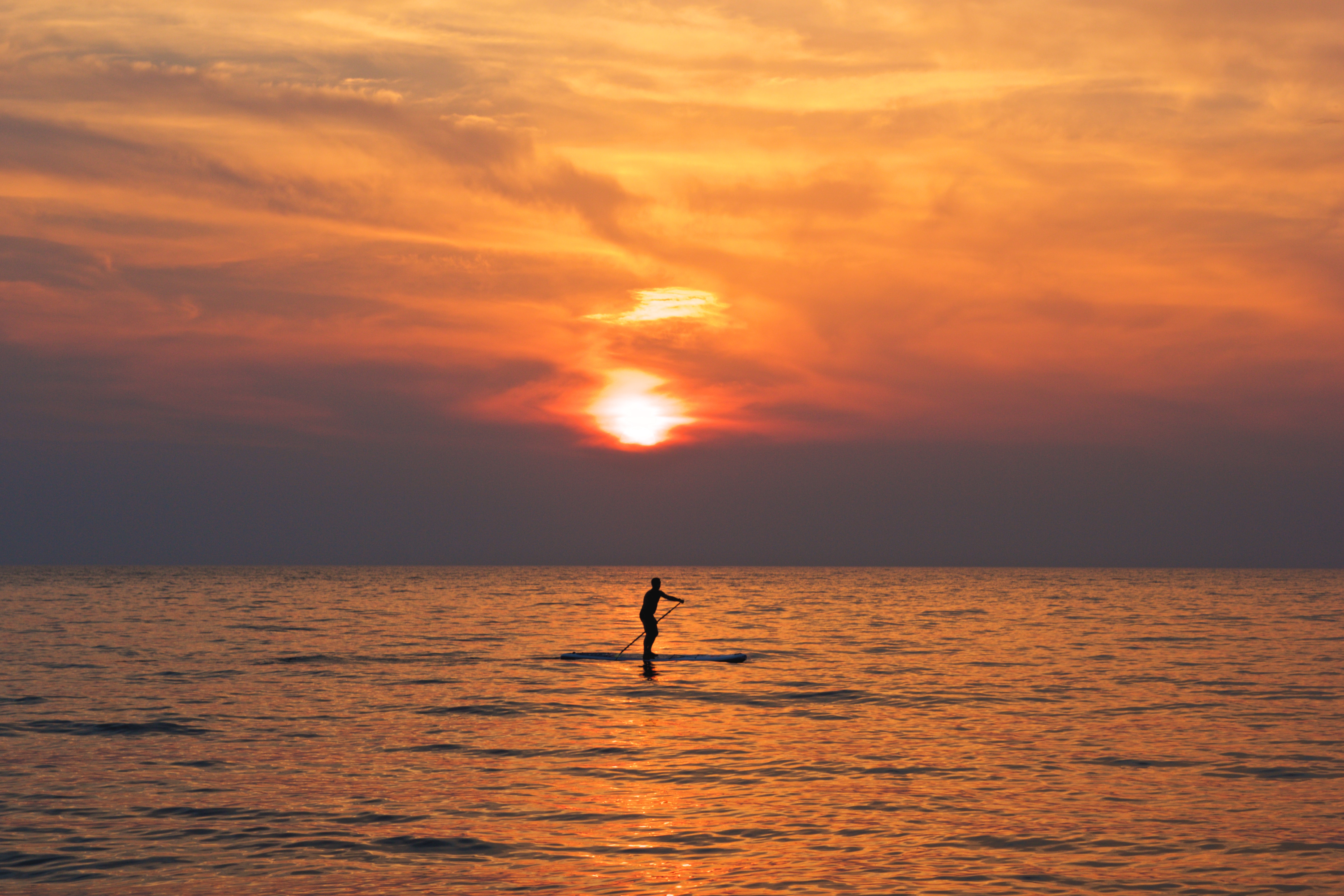
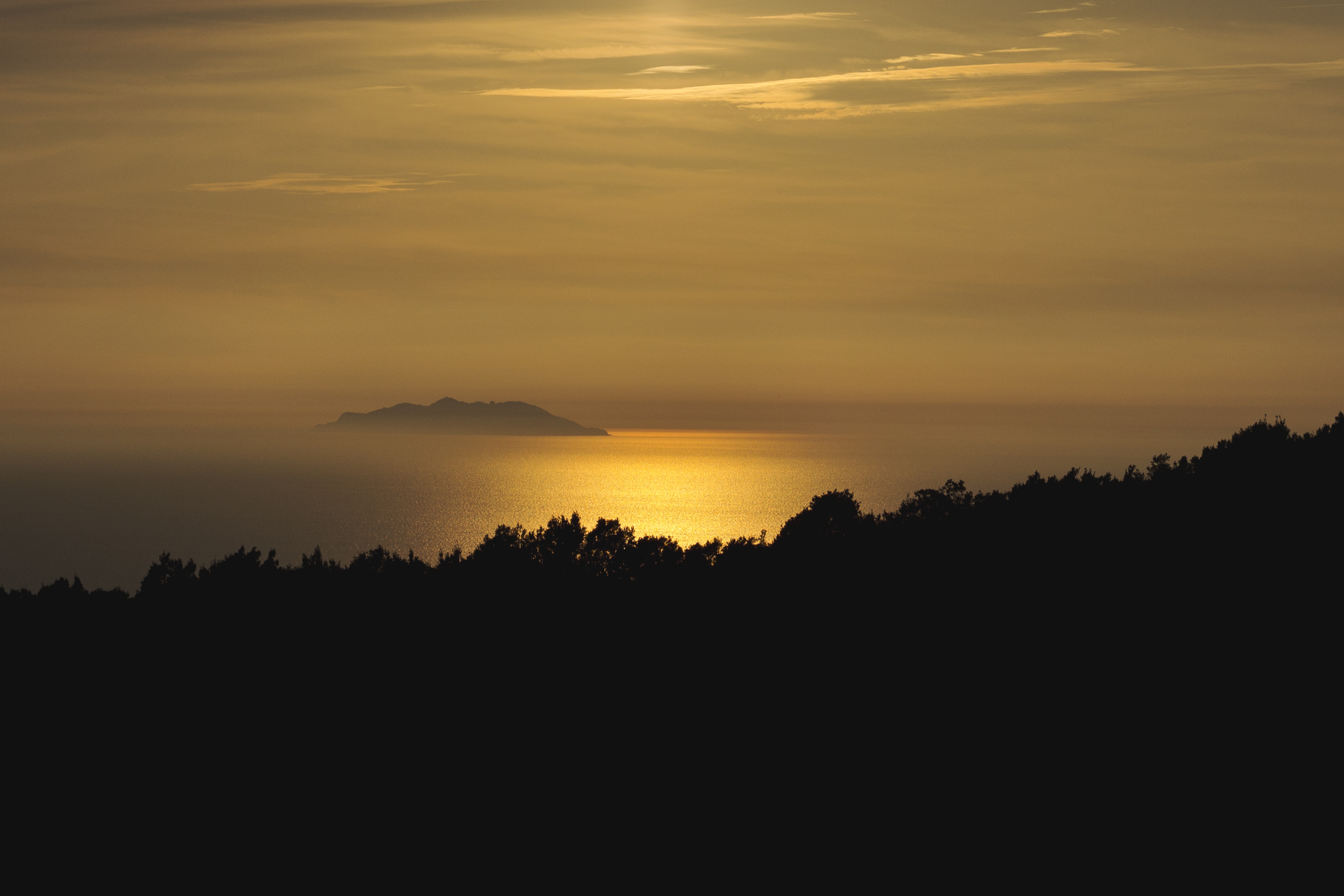
About Livorno
Livorno is a gritty city with a long and interesting history. In the early Middle Ages it alternately belonged to Pisa and Genoa. In 1421 Florence, seeking access to the sea, bought it. Cosimo I (1519–74) started construction of the harbor in 1571, putting Livorno on the map. After Ferdinando I de' Medici (1549–1609) proclaimed Livorno a free city, it became a haven for people suffering from religious persecution; Roman Catholics from England and Jews and Moors from Spain and Portugal, among others, settled here. The Quattro Mori (Four Moors), also known as the Monument to Ferdinando I, commemorates this. (The statue of Ferdinando I dates from 1595, the bronze Moors by Pietro Tacca from the 1620s.)In the following centuries, and particularly in the 18th, Livorno boomed as a port. In the 19th century the town drew a host of famous Britons passing through on their grand tours. Its prominence continued up to World War II, when it was heavily bombed. Much of the town's architecture, therefore, postdates the war, and it's somewhat difficult to imagine what it might have looked like before. Livorno has recovered from the war, however, as it's become a huge point of departure for container ships, as well as the only spot in Tuscany for cruise ships to dock for the day.Most of Livorno's artistic treasures date from the 17th century and aren't all that interesting unless you dote on obscure baroque artists. Livorno's most famous native artist, Amedeo Modigliani (1884–1920), was of much more recent vintage. Sadly, there's no notable work by him in his hometown.There may not be much in the way of art, but it's still worth strolling around the city. The Mercato Nuovo, which has been around since 1894, sells all sorts of fruits, vegetables, grains, meat, and fish. Outdoor markets nearby are also chock-full of local color. The presence of Camp Darby, an American military base just outside town, accounts for the availability of many American products.If you have time, Livorno is worth a stop for lunch or dinner at the very least.


About Civitavecchia
Italy's vibrant capital lives in the present, but no other city on earth evokes its past so powerfully. For over 2,500 years, emperors, popes, artists, and common citizens have left their mark here. Archaeological remains from ancient Rome, art-stuffed churches, and the treasures of Vatican City vie for your attention, but Rome is also a wonderful place to practice the Italian-perfected il dolce far niente, the sweet art of idleness. Your most memorable experiences may include sitting at a caffè in the Campo de' Fiori or strolling in a beguiling piazza.
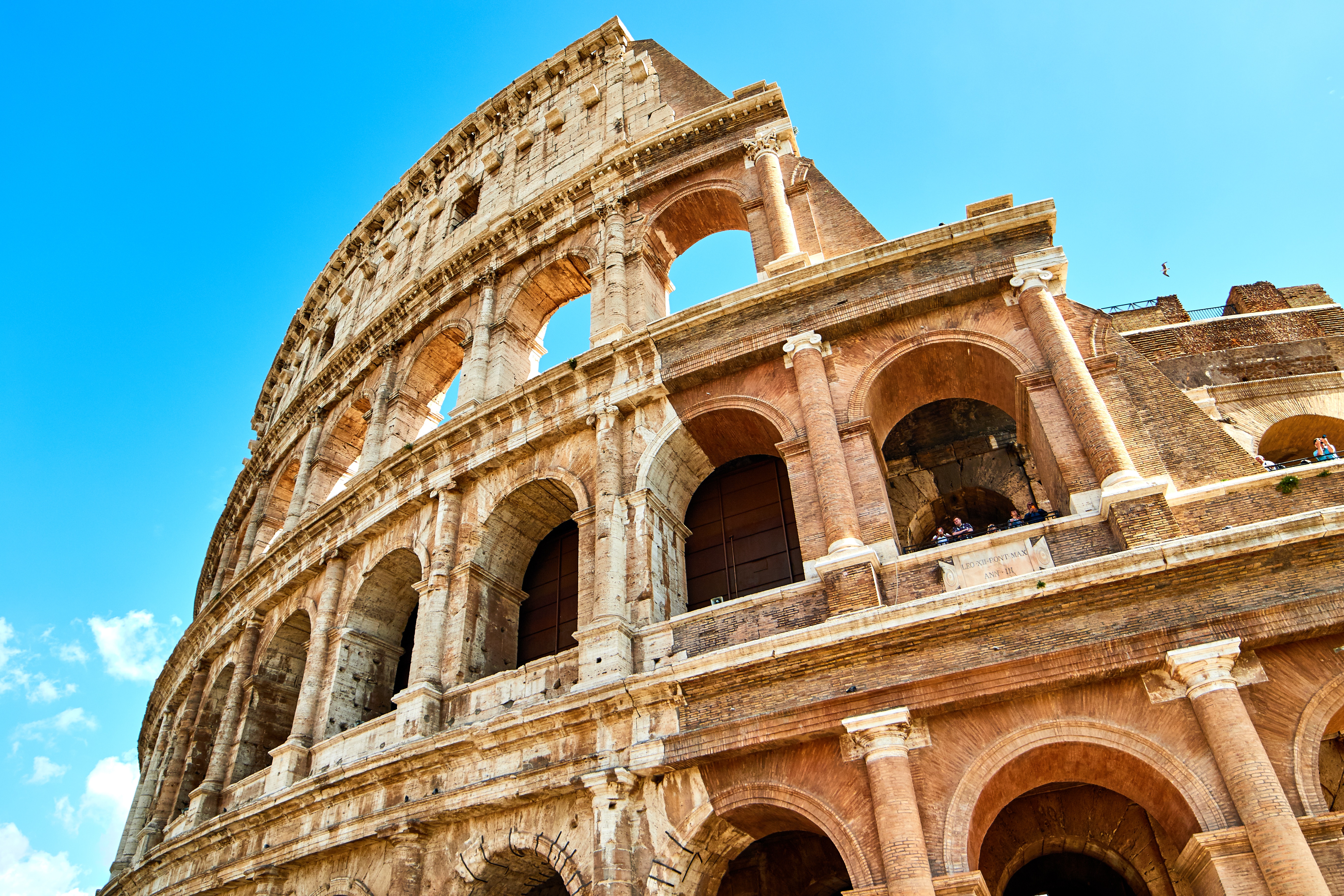

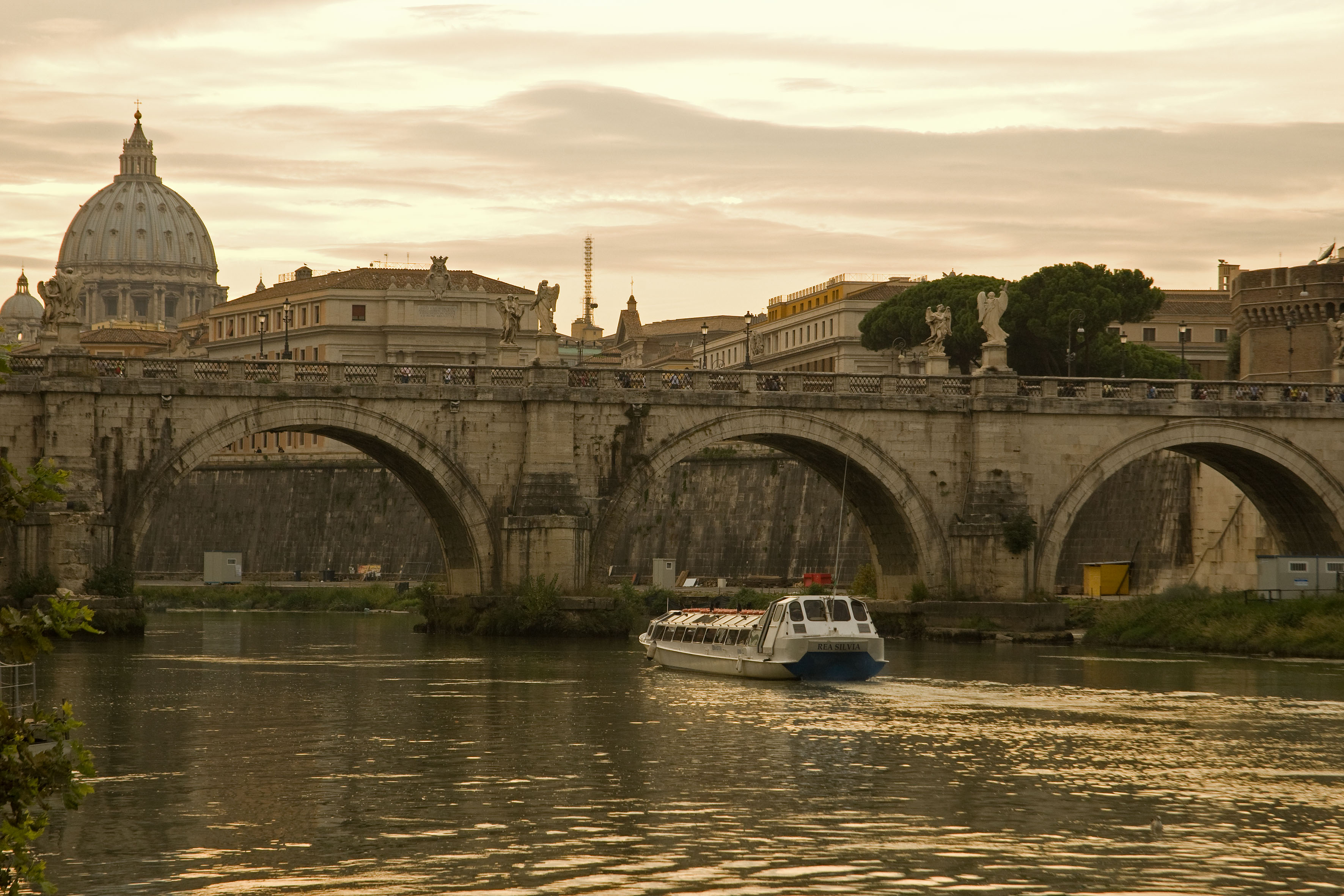


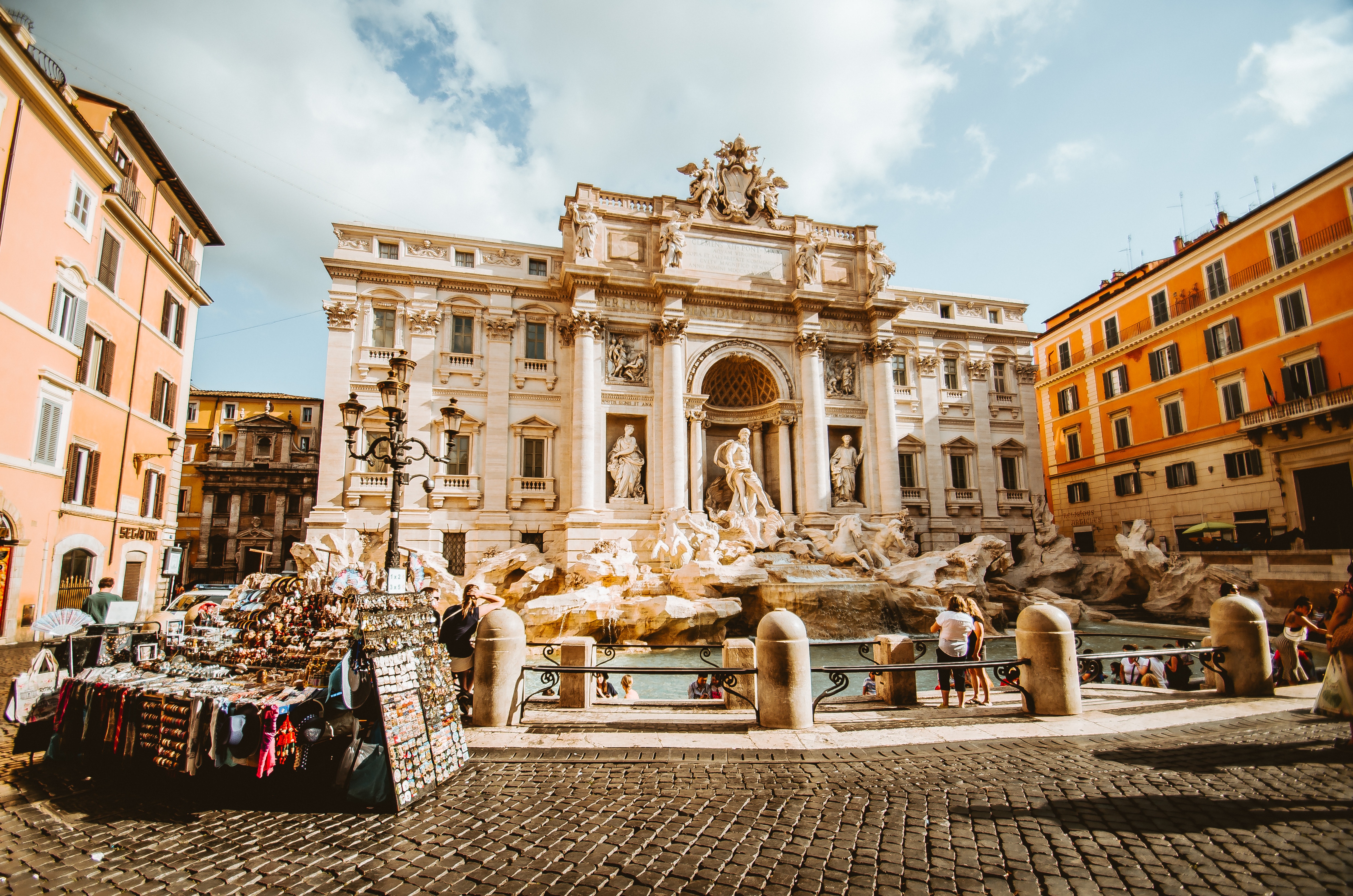
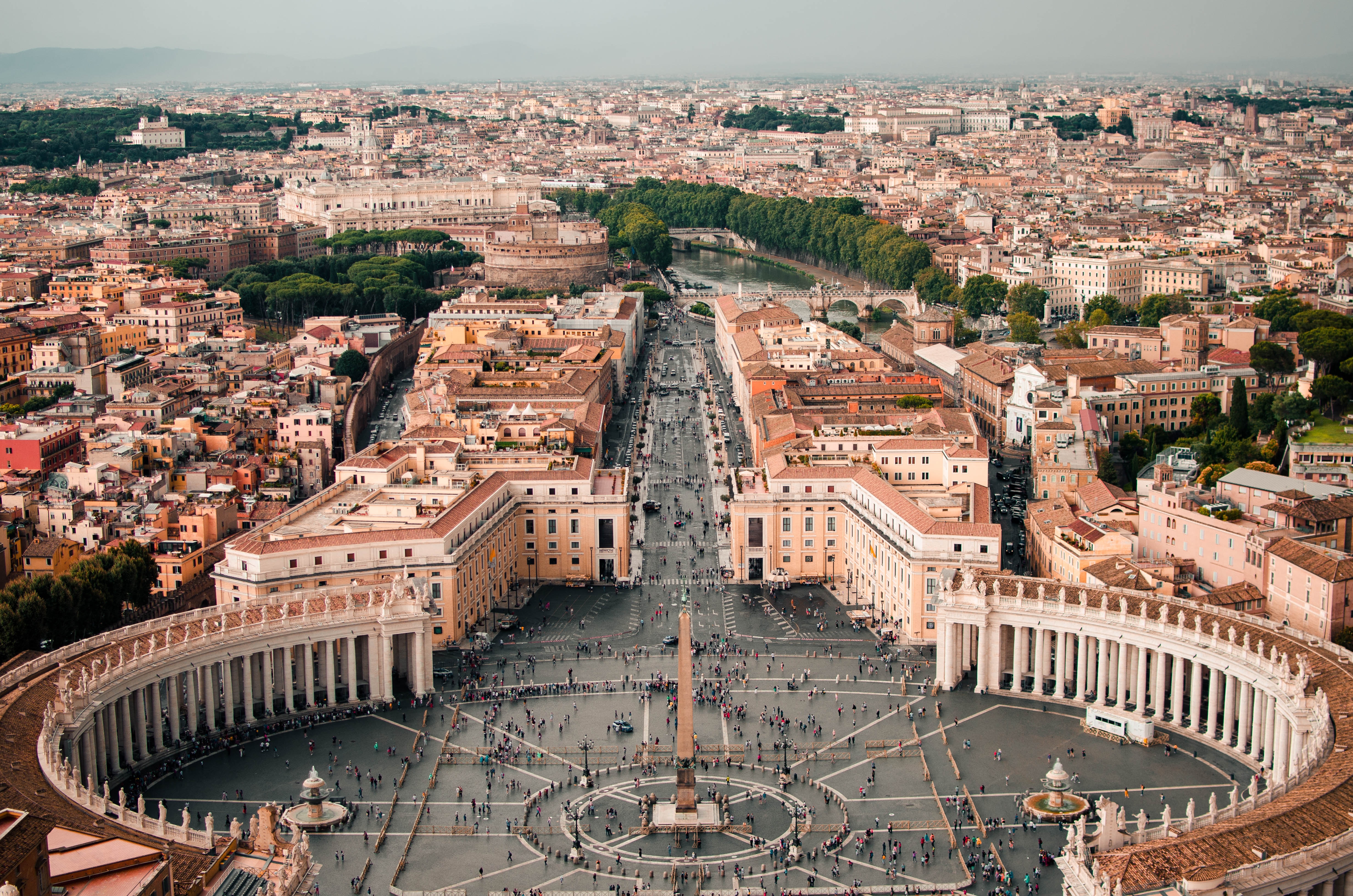
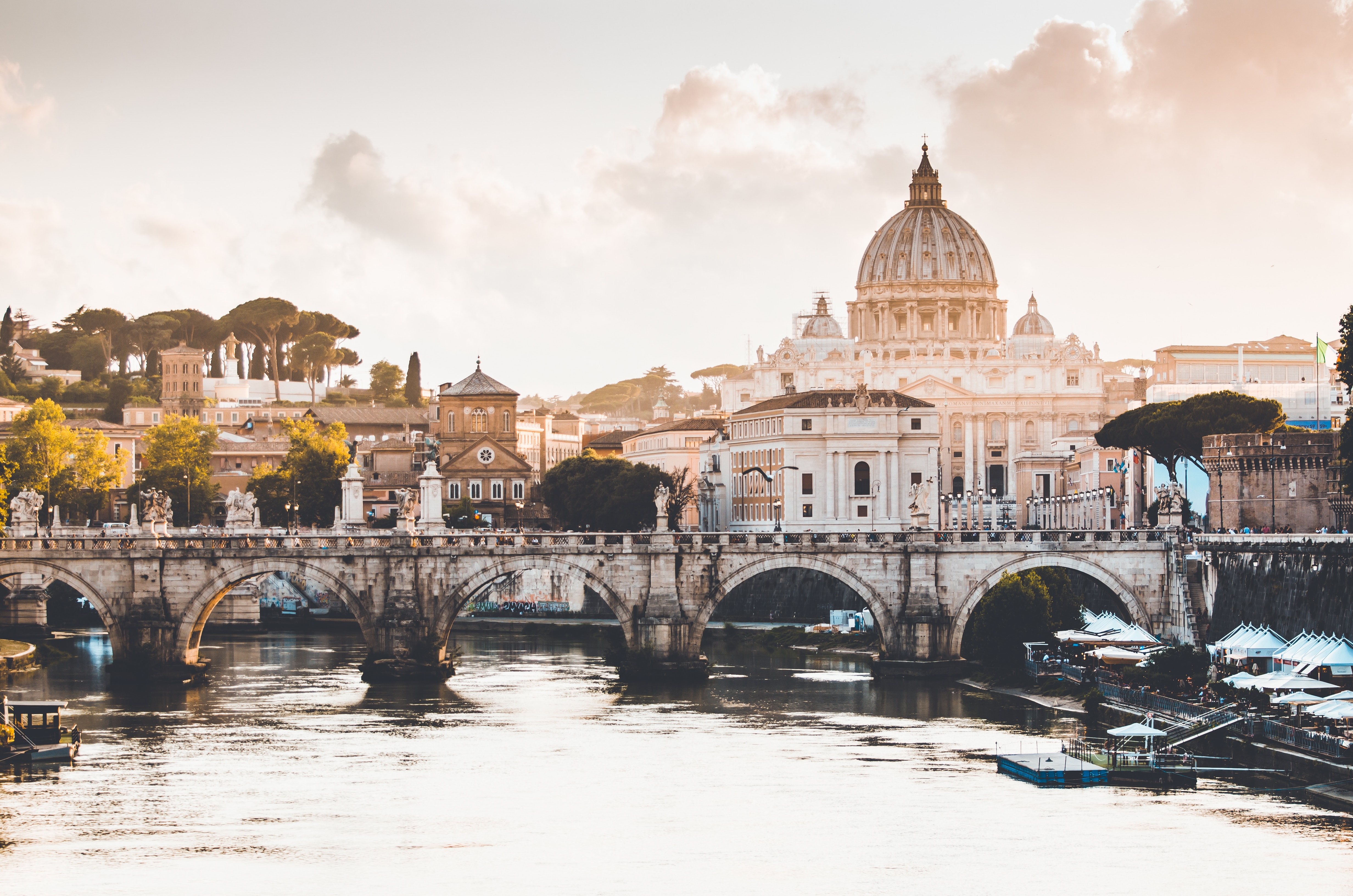
- 11:00 AM embarkation
- 11:00 AM priority stateroom access
- First opportunity to reserve shore excursions: 107 days prior to departure
- 4 guaranteed priority reservations at each alternative restaurant: 100 days prior to departure
- First priority booking of spa treatments: 100 days prior to departure
- King-size Viking Explorer Bed with luxury linens & pillows
- Free Wi-Fi (connection speed may vary)
- Three 42 flat-screen, interactive LCD TVs with intuitive remote & complimentary Movies On Demand
- 110/220 volt outlets & USB ports
- Mini-bar with alcoholic beverages, soft drinks, water & upgraded snacks (replenished once daily); security safe; hair dryer
- Direct-dial satellite phone & cell service
- Large master bathroom featuring a spacious glass-enclosed shower, double-sink vanity, heated bathroom floor & anti-fog mirror, plus two guest bathrooms
- Premium Freyja® toiletries; plush robes & slippers
- Purified water refilled daily
- Stateroom steward & twice-daily housekeeping
- 24-hour room service (including service from any restaurant during open hours)
- Spacious walk-in closet & drawers
- Complimentary laundry, dry cleaning, pressing & shoe shine services
- Welcome bottle of Veuve Clicquot champagne
- In-suite binoculars, coffee brewer & traditional Norwegian Marius-weave blanket
- Spacious, well-appointed living room
- Separate dining area that seats 6 guests
- Private library, wine & music collections curated by Chairman Torstein Hagen
- Ocean-view dry sauna
- Boardroom (seats 12) for business meetings & catered dinner parties, with first oceangoing vapor-light fireplace
- Pantry for room service & hosted events
- Complimentary shore excursion with private car & driver (up to 4 guests) in port city of your choice (valued at up to $800)
- Daily personalized tea or pre-dinner cocktail & canapés by request
- Dinner & guided tour with ship officers (subject to availability)
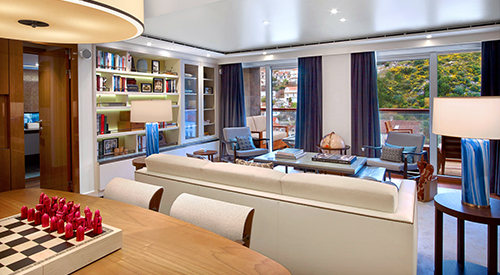
- 11:00 AM embarkation
- 11:00 AM priority stateroom access
- Priority shore excursion reservations: 97 days prior to departure
- 3 guaranteed priority reservations at each alternative restaurant: 90 days prior to departure
- Priority booking of spa treatments: 90 days prior to departure
- King-size Viking Explorer Bed with luxury linens & pillows
- Free Wi-Fi (connection speed may vary)
- Two 42" flat-screen, interactive LCD TVs with intuitive remote & complimentary Movies On Demand
- 110/220 volt outlets & USB ports
- Mini-bar with alcoholic beverages, soft drinks, water & snacks (replenished once daily); security safe; hair dryer
- Direct-dial satellite phone & cell service
- Large private bathroom with spacious glass-enclosed shower, double-sink vanity, heated bathroom floor & anti-fog mirror
- Premium Freyja® toiletries; plush robes & slippers
- Purified water refilled daily
- Stateroom steward & twice-daily housekeeping
- 24-hour room service
- Spacious closet & drawers
- Complimentary laundry, dry cleaning, pressing & shoe shine services
- Welcome bottle of champagne
- In-suite binoculars, coffee brewer & traditional Norwegian Marius-weave blanket
- Well-appointed living room & dining area that seats 4 guests
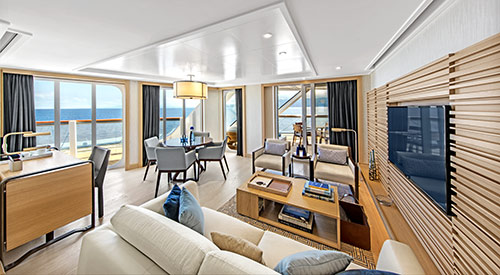
- 11:00 AM embarkation
- 11:00 AM priority stateroom access
- Priority shore excursion reservations: 87 days prior to departure
- 3 guaranteed priority reservations at each alternative restaurant: 80 days prior to departure
- Priority booking of spa treatments: 80 days prior to departure
- King-size Viking Explorer Bed with luxury linens & pillows
- Free Wi-Fi (connection speed may vary)
- Two 42" flat-screen, interactive LCD TVs with intuitive remote & complimentary Movies On Demand
- 110/220 volt outlets & USB ports
- Mini-bar with alcoholic beverages, soft drinks, water & snacks (replenished once daily); security safe; hair dryer
- Direct-dial satellite phone & cell service
- Large private bathroom with spacious glass-enclosed shower, double-sink vanity, heated bathroom floor & anti-fog mirror
- Premium Freyja® toiletries; plush robes & slippers
- Purified water refilled daily
- Stateroom steward & twice-daily housekeeping
- 24-hour room service
- Spacious closet & drawers
- Complimentary laundry, dry cleaning, pressing & shoe shine services
- Welcome bottle of champagne
- In-suite binoculars, coffee brewer & traditional Norwegian Marius-weave blanket
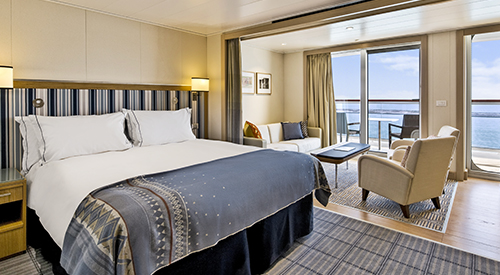
- 11:00 AM embarkation
- 1:00 PM stateroom access
- Priority shore excursion reservations: 77 days prior to departure
- 2 guaranteed priority reservations at each alternative restaurant: 70 days prior to departure
- Priority booking of spa treatments: 70 days prior to departure
- King-size Viking Explorer Bed with luxury linens & pillows
- Free Wi-Fi (connection speed may vary)
- 42" flat-screen, interactive LCD TV with intuitive remote & complimentary Movies On Demand
- 110/220 volt outlets & USB ports
- Mini-bar with alcoholic beverages, soft drinks, water & snacks (replenished once daily); security safe; hair dryer
- Direct-dial satellite phone & cell service
- Large private bathroom with spacious glass-enclosed shower, heated bathroom floor & anti-fog mirror
- Premium Freyja® toiletries; plush robes & slippers
- Purified water refilled daily
- Stateroom steward & twice-daily housekeeping
- 24-hour room service
- Spacious closet & drawers
- Complimentary pressing & shoe shine services
- Welcome bottle of champagne
- In-suite binoculars, coffee brewer & traditional Norwegian Marius-weave blanket
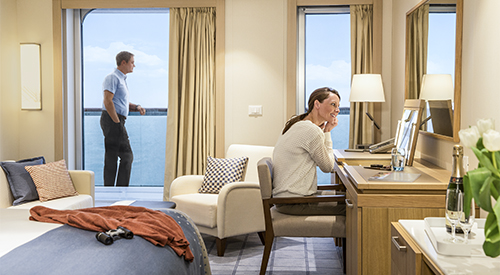
- 11:00 AM embarkation
- 2:00 PM stateroom access
- Priority shore excursion reservations: 67 days prior to departure
- 1 guaranteed priority reservation at each alternative restaurant: 60 days prior to departure
- Priority booking of spa treatments: 60 days prior to departure
- King-size Viking Explorer Bed with luxury linens & pillows
- Free Wi-Fi (connection speed may vary)
- 42" flat-screen, interactive LCD TV with intuitive remote & complimentary Movies On Demand
- 110/220 volt outlets & USB ports
- Mini-bar with soft drinks, water & snacks (replenished once daily); security safe; hair dryer
- Direct-dial satellite phone & cell service
- Large private bathroom with spacious glass-enclosed shower, heated bathroom floor & anti-fog mirror
- Premium Freyja® toiletries; plush robes & slippers
- Purified water refilled daily
- Stateroom steward & twice-daily housekeeping
- 24-hour room service
- Spacious closet & drawers
- In-suite binoculars, coffee brewer & traditional Norwegian Marius-weave blanket
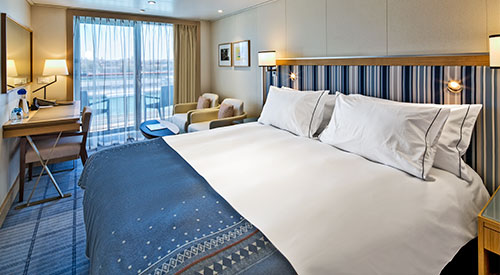
- 11:00 AM embarkation
- 3:00 PM stateroom access
- Shore excursion reservations: 60 days prior to departure
- King-size Viking Explorer Bed with luxury linens & pillows
- Free Wi-Fi (connection speed may vary)
- 42" flat-screen, interactive LCD TV with intuitive remote & complimentary Movies On Demand
- 110/220 volt outlets & USB ports
- Mini-bar with soft drinks, water & snacks; security safe; hair dryer
- Direct-dial satellite phone & cell service
- Large private bathroom with spacious glass-enclosed shower, heated bathroom floor & anti-fog mirror
- Premium Freyja® toiletries; plush robes & slippers
- Purified water refilled daily
- Stateroom steward & twice-daily housekeeping
- 24-hour room service
- Spacious closet & drawers

Viking Neptune
Expand your horizons on this comfortable, award-winning ship design, intimate and thoughtfully created by experienced nautical architects and designers to enrich your interaction with your destination in every way.

Ship Facts
| Launch Year | 2022 | ||||||||
| Refit Year | |||||||||
| Language | en | ||||||||
| Gross Tonnage | N/A | ||||||||
| Length | 2444 | ||||||||
| Width | 310 | ||||||||
| Currency | EUR | ||||||||
| Speed | N/A | ||||||||
| Capacity | 930 | ||||||||
| Crew Count | N/A | ||||||||
| Deck Count | N/A | ||||||||
| Cabin Count | N/A | ||||||||
| Large Cabin Count | N/A | ||||||||
| Wheelchair Cabin Count | N/A | ||||||||
| Electrical Plugs |
|
Deck 1
- The Kitchen Table
- The Chef's Table
- Manfredi's Italian Restaurant
- Private Dining 1
- Private Dining 2
- Lifts
- The Viking Living Room
- Viking Bar
- Shop
- Salon
- Fitness Center
- The Spa

Deck 2
- The Restaurant
- Atrium
- Torshavn
- The Shop
- Cinema 1
- Cinema 2
- Bar
- The Theatre

Deck 3
- Atrium
- Lifts
- Launderette
- Explorer Suites
- Verandas
- Deluxe Verandas

Deck 4
- Lifts
- Launderette
- Explorer Suites
- Deluxe Verandas
- Penthouse Verandas

Deck 5
- Lifts
- Launderette
- Explorer Suites
- Deluxe Verandas
- Penthouse Verandas

Deck 6
- Lifts
- Launderette
- Explorer Suites
- Penthouse Jr. Suites (Accessible)
- Penthouse Verandas
- Deluxe Verandas

Deck 7
- Infinity Pool
- Aquavit Terrace
- Hot Tub
- World Cafe
- Lifts
- Pool Grill
- Pool Bar
- Screen
- Main Pool
- Wintergarden
- Lanai
- Mamsen's
- Paps
- Explorers' Lounge
- Owner's Suites
- Penthouse Jr. Suite
- Deluxe Verandas

Deck 8
- Lifts
- Retractable Roof
- Explorers' Lounge Upper Level
- Penthouse Jr. Suites
- Deluxe Verandas

Deck 9
- Lifts
- Sports Deck
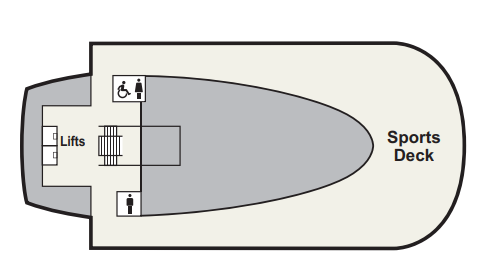
The Restaurant
Manfredi’s® Italian Restaurant
The Chef’s Table
World Café
Aquavit Terrace®
Mamsen’s®
Wintergarden
Pool Grill
Room Service
Elegant, light-filled ships thoughtfully designed to connect you to your destination.
The Library
The Living Room
Explorers' Lounge
Wintergarden
Under a canopy of Scandinavian trellised wood in the serene Wintergarden, indulge in afternoon tea service, complete with freshly made finger sandwiches, richly textured scones and delightful desserts.
Aquavit Terrace
Torshavn®
The Theatre & 2 Cinemas